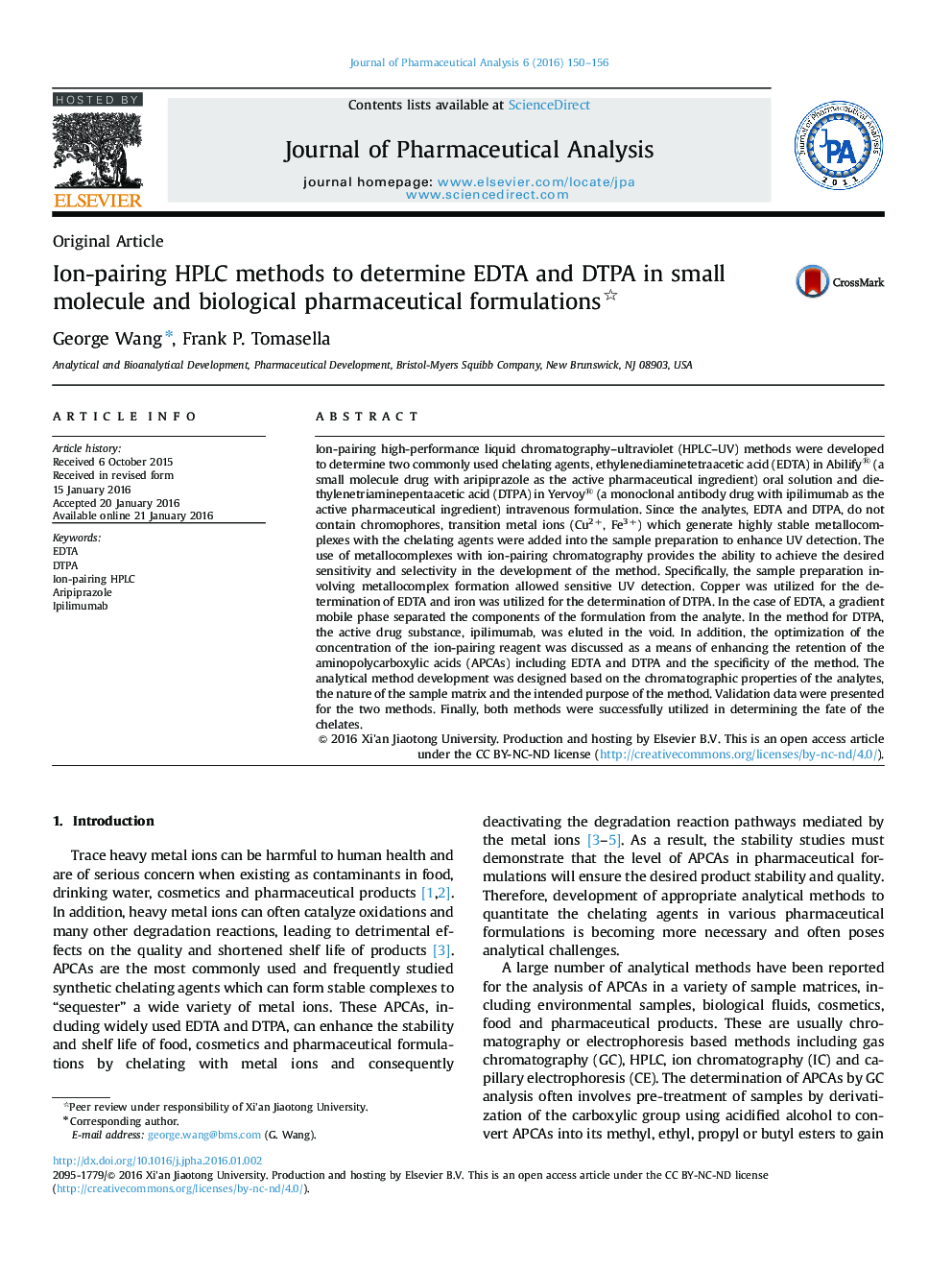| Article ID | Journal | Published Year | Pages | File Type |
|---|---|---|---|---|
| 2507666 | Journal of Pharmaceutical Analysis | 2016 | 7 Pages |
Ion-pairing high-performance liquid chromatography–ultraviolet (HPLC–UV) methods were developed to determine two commonly used chelating agents, ethylenediaminetetraacetic acid (EDTA) in Abilify® (a small molecule drug with aripiprazole as the active pharmaceutical ingredient) oral solution and diethylenetriaminepentaacetic acid (DTPA) in Yervoy® (a monoclonal antibody drug with ipilimumab as the active pharmaceutical ingredient) intravenous formulation. Since the analytes, EDTA and DTPA, do not contain chromophores, transition metal ions (Cu2+, Fe3+) which generate highly stable metallocomplexes with the chelating agents were added into the sample preparation to enhance UV detection. The use of metallocomplexes with ion-pairing chromatography provides the ability to achieve the desired sensitivity and selectivity in the development of the method. Specifically, the sample preparation involving metallocomplex formation allowed sensitive UV detection. Copper was utilized for the determination of EDTA and iron was utilized for the determination of DTPA. In the case of EDTA, a gradient mobile phase separated the components of the formulation from the analyte. In the method for DTPA, the active drug substance, ipilimumab, was eluted in the void. In addition, the optimization of the concentration of the ion-pairing reagent was discussed as a means of enhancing the retention of the aminopolycarboxylic acids (APCAs) including EDTA and DTPA and the specificity of the method. The analytical method development was designed based on the chromatographic properties of the analytes, the nature of the sample matrix and the intended purpose of the method. Validation data were presented for the two methods. Finally, both methods were successfully utilized in determining the fate of the chelates.
